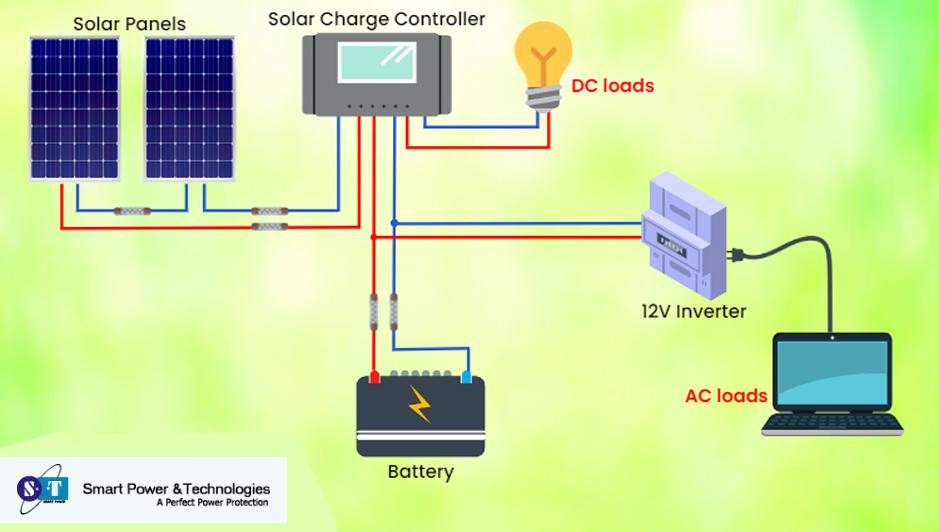In an era marked by increasing energy demands and a growing emphasis on sustainable practices, solar panels have emerged as a viable solution for both residential and commercial energy needs. Harnessing the power of the sun to generate electricity is not only environmentally friendly but also a cost-effective alternative to traditional energy sources. However, one of the challenges of solar power systems is ensuring a continuous power supply, especially during grid outages. This is where the integration of solar panels with Uninterruptible Power Supplies (UPS) comes into play. In this article, we will explore the benefits, considerations, and steps involved in connecting solar panels with UPS systems to achieve uninterrupted power flow.
Understanding Solar Panel Systems
Solar panel systems, also known as photovoltaic (PV) systems, convert sunlight into electricity through the photovoltaic effect. Solar panels consist of multiple solar cells that generate direct current (DC) electricity when exposed to sunlight. To make this electricity usable for households and businesses, it needs to be converted into alternating current (AC) using an inverter. Solar power systems can be grid-tied or off-grid:
- Grid-Tied Solar Systems: These systems are connected to the main electrical grid. Excess electricity generated by the solar panels can be fed back into the grid, often resulting in credits or payments from the utility company. However, during grid outages, these systems shut down for safety reasons to prevent sending electricity into the grid while it’s being repaired.
- Off-Grid Solar Systems: Off-grid systems operate independently of the main grid. They use battery banks to store excess electricity generated during sunny periods, ensuring a continuous power supply even when the sun isn’t shining.
The Role of UPS Systems
Uninterruptible Power Supplies (UPS) are devices designed to provide backup power in the event of power interruptions or outages. They offer a seamless transition from the main power source to the backup power source, ensuring that connected devices and systems remain operational without disruption. UPS systems commonly use batteries or flywheels to store energy, which can be released rapidly when needed. UPS systems are widely used to protect sensitive electronic equipment, such as computers, servers, and medical devices, from sudden power loss.
Benefits of Connecting Solar Panels with UPS
Integrating solar panels with UPS systems brings forth several advantages:
- Continuous Power Supply: The most significant benefit is the ability to maintain power supply during grid outages. This is particularly important for critical systems and appliances that need to function consistently, such as medical equipment, security systems, and communication devices.
- Optimized Energy Utilization: By storing excess solar-generated energy in the UPS batteries, you can optimize the utilization of solar power. Electricity that isn’t used right away is saved for later use, minimizing reliance on the grid and possibly saving you money.
- Reduced Carbon Footprint: Solar panels are a clean energy source, generating electricity without producing greenhouse gas emissions. By coupling them with UPS systems, you enhance your contribution to a sustainable future by minimizing the need for fossil fuel-based backup generators.
- Economic Benefits: While the initial investment might seem substantial, the long-term savings from reduced electricity bills and potential incentives can make the integration financially rewarding.
Considerations Before Integration
Before connecting solar panels with a UPS system, there are several key considerations to keep in mind:
- System Sizing: Ensure that both the solar panel system and the UPS are appropriately sized to meet your energy needs. A professional assessment can help you determine the right capacity for your setup.
- Battery Capacity: UPS systems rely on batteries for backup power. Assess your battery bank’s capacity to store excess solar energy and power your essential devices during outages.
- Inverter Compatibility: Confirm that the solar panel inverter and the UPS are compatible. Some UPS systems might require specific voltage or frequency ranges that the solar inverter needs to meet.
- Wiring and Circuitry: Proper wiring and circuit design are crucial to ensure the smooth flow of electricity between the solar panels, the UPS, and your electrical loads.
Steps for Connecting Solar Panels with UPS
- Assessment: Begin by assessing your energy needs and the appliances you want to power during outages. This assessment will guide you in determining the required capacity of your UPS and the battery bank.
- Choose a UPS System: Select a UPS system that aligns with your energy needs. Consider factors such as power rating, battery capacity, and the number of outlets.
- Battery Bank Setup: Install the battery bank that will store excess solar-generated electricity. This involves connecting the batteries in a series or parallel configuration, depending on the UPS system’s requirements.
- Inverter Connection: Connect the solar panel inverter to the UPS input. Ensure compatibility between the inverter’s output and the UPS input requirements.
- Load Connection: Connect the critical appliances and devices you want to power during outages to the UPS outlets. These outlets will receive power from the solar panels via the UPS system.
- Testing: Perform thorough testing to ensure that the solar panels charge the batteries correctly, and the UPS system provides seamless backup power to connected loads during simulated outages.
- Monitoring and Maintenance: Regularly monitor the performance of your integrated system. Check the battery health, wiring connections, and overall functionality to ensure everything is working optimally.
Conclusion
The integration of solar panels with Uninterruptible Power Supplies presents a powerful solution for ensuring a continuous and reliable power supply, even in the face of grid outages. By combining the benefits of clean solar energy with the backup capabilities of UPS systems, individuals and businesses can mitigate the impact of power disruptions while contributing to a more sustainable energy future. However, it’s crucial to undertake careful planning, seek professional guidance if necessary, and ensure proper installation to maximize the effectiveness of this integrated setup. With the right approach, you can enjoy the best of both worlds: green energy and uninterrupted power.

